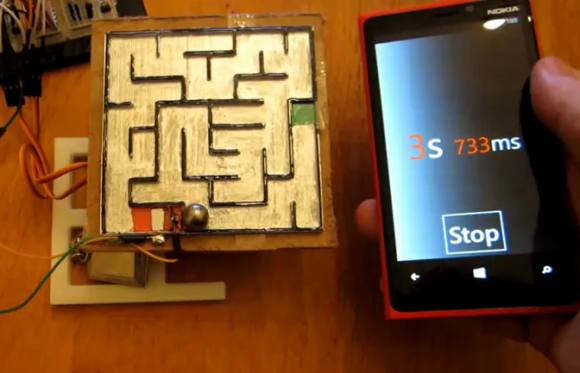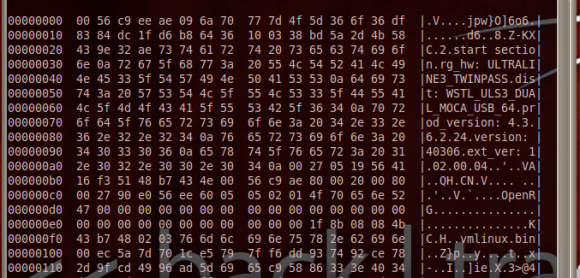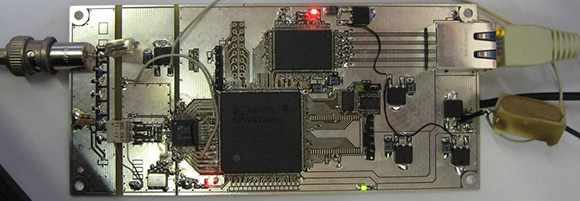
This entire project could have been done as an app, drawing the maze and ball virtually on the screen. But that wouldn’t have been nearly as fun as what [Matt] accomplished. He built a little Labyrinth which responds to the accelerometer in his phone.
Take a close look at that handset. It’s not an Android, an iPhone, or a Blackberry. That thing is a Windows phone…. no, really! The phone doubles as a timer, which we think is a nice touch. It communicates with a Netduino which is both driving and monitoring the Labyrinth.
You may have noticed that the maze is hand-built rather than a modified commercial version of the toy. He mounted some hardboard on a pair of servo motors, then built up the maze on that surface. There is also sensing hardware that detects when the metal ball bridges two contacts. This gives us fond memories of our Minotaur’s Revenge build.
We’ve embedded the demo video after the break.





















